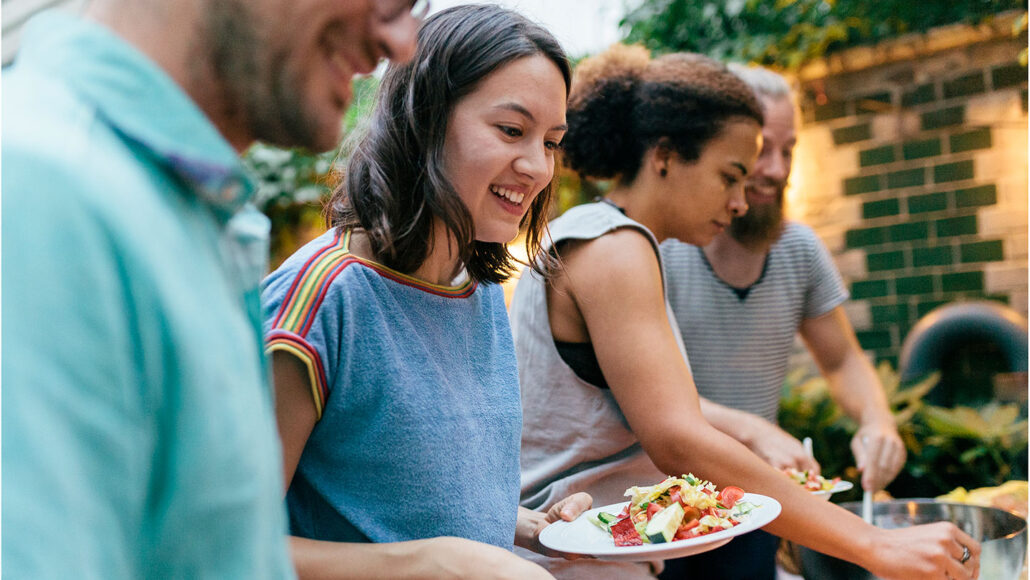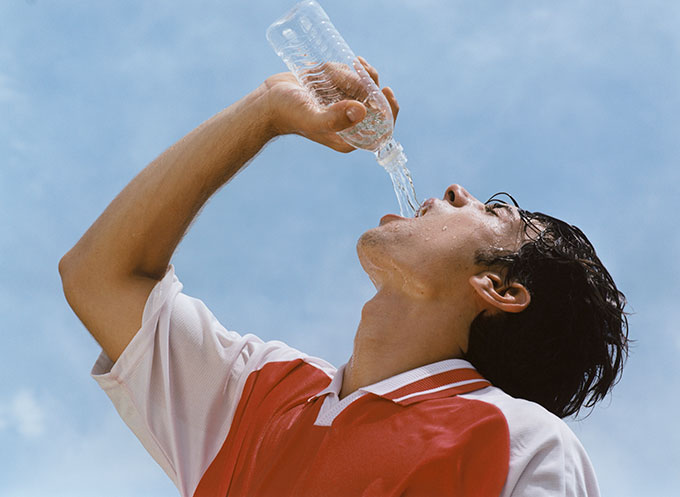We all unknowingly eat plastic, which may host toxic pollutants
Microplastic bits are strong pollution magnets, collecting chemicals that may be harmful

Although we don’t mean to, we swallow tiny pieces of plastic every day. A new study shows why these ingested bits may be toxic.
Hinterhaus Productions/DigitalVision/Getty Image Plus
Tiny bits of plastic, or microplastics, have been showing up all over the globe. As they move through the environment, some of these pieces can wind up contaminating food or water. That’s been a concern, because many of these plastic pieces pick up toxic pollutants, only to later release them. No one had really known whether these plastic bits could carry enough pollution to harm living cells. Until now.
A new study out of Tel Aviv University in Israel shows that microplastics can ferry enough of a pollutant to harm cells from the human gut.
The new study did not expose people to such tainted plastic bits. Instead, it used human gut cells growing in a dish. They were meant to partially model what can happen to those cells in the body.
The new data show that if swallowed, these tiny plastic bits can release toxic pollutants “in close proximity to the cells of the digestive tract” — the gut, notes Ines Zucker. She and Andrey Ethan Rubin shared these new findings in the February issue of Chemosphere.

Educators and Parents, Sign Up for The Cheat Sheet
Weekly updates to help you use Science News Explores in the learning environment
Thank you for signing up!
There was a problem signing you up.
Triclosan as a model pollutant
The environmental scientists worked with microbeads made of polystyrene, a type of plastic. Face washes, toothpastes and lotions commonly use such beads. By themselves, those beads are not very harmful. But in the environment, they can change, or “weather.” Exposure to the sun, winds and pollution makes them more likely to pick up contaminants.
So Rubin and Zucker used plain (unweathered) beads, plus two types of beads that mimic weathered ones. The first weathered type had a negative electrical charge on its surface. The second’s surface was positively charged. Each of these surfaces would likely interact differently with chemicals in the environment.
To test that, the scientists put each type of bead in a separate vial along with a solution that contained triclosan (TRY-kloh-san). It’s a bacteria-fighter used in soaps, body washes and other products. Triclosan can be toxic to people, so governments have banned it in some products. Yet even long after a ban, notes Rubin, small residues of the chemical can linger in the environment.
“Triclosan was found in certain rivers in the United States,” Rubin says. It’s also “a convenient model,” he adds, “to estimate the behavior of other environmental pollutants” — especially those with a similar chemical structure.
He and Zucker left the vials in the dark for six and a half days. During that time, the researchers periodically removed small amounts of the liquid. This let them measure how much triclosan had left the solution to glom onto the plastic.
It took six days for triclosan to coat the beads, Rubin says. This made him suspect that even beads soaked in a weak solution of this chemical might become toxic.
A toxic brew
To test that, he and Zucker put the triclosan-covered beads in a broth rich in nutrients. This liquid was used to mimick the inside of the human gut. Zucker and Rubin left the beads there for two days. This is the average time it takes food to move through the gut. Then, the scientists tested the broth for triclosan.

The positively charged microbeads had released up to 65 percent of their triclosan. Negatively charged pieces released far less. That means they held on to it better. But that’s not necessarily a good thing, Rubin adds. This would allow the beads to ferry triclosan deeper into the digestive tract.
The beads only hold onto the triclosan if there’s not much competition from other substances. In the nutrient-rich broth, other substances became attracted to the plastic (such as amino acids). Some now swapped out places with the pollutant. In the body, this could release the triclosan into the gut, where it might harm cells.
The colon is the last part of the digestive tract. Triclosan would have many hours to break free from plastic bits moving through the gut. So cells of the colon would likely end up exposed to the most triclosan. To better understand this, the Tel Aviv team incubated their tainted microbeads with human colon cells.
Rubin and Zucker then checked the cells’ health. They used a fluorescent marker to stain cells. Living cells glowed brightly. Those that were dying lost their luster. Weathered microbeads released enough triclosan to kill one in four cells, the scientists found. This made the microplastic-and-triclosan combo 10 times more toxic than the triclosan would be on its own, Rubin reports.
It’s the weathered plastic that appears to pose a concern, he concludes. Although nature is complex, he says, “we are trying to simplify it using these models to estimate real life as much as we can. It’s not perfect. But we try to do it as close as we can to nature.”
Still, effects seen here might not occur in people, cautions Robert C. Hale. He’s an environmental chemist at the Virginia Institute of Marine Science in Gloucester Point. Levels of triclosan in the new tests “were quite high compared to what is found in the environment,” he notes. Still, he adds, the new findings reinforce a need to assess the risks microplastics can pose. After all, he points out, most microplastics in the environment will be weathered.
How can you reduce your exposure to toxic microplastics? “The best policy,” says Rubin, is to use plastics as little as possible. That includes so-called “green” bioplastics. “And then,” he says, “we can think about recycling.”







